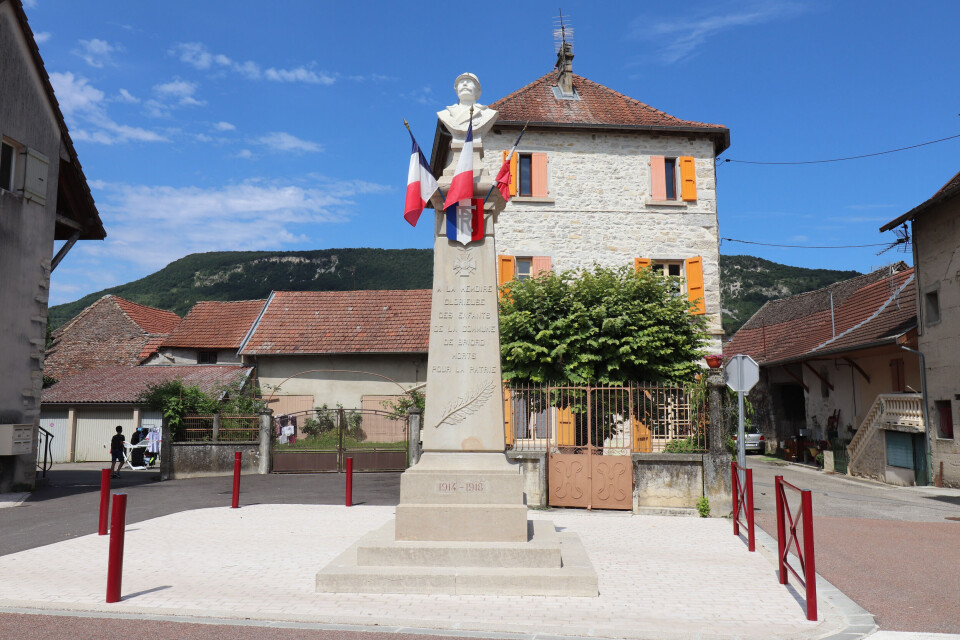-
Many Société Générale customers to be charged additional fees from April
There is some good news for international banking and instant transfers, however
-
Why gas prices in France are rising in April - and by how much
It comes after six consecutive monthly rises. Try these tips to reduce your bills
-
New notaire data suggests easing of Paris property crisis
Property experts have talked of ‘easing pressure’ and ‘breathing space’ after a four-year slump
11 things to know about Armistice Day, November 11, in France
As the country commemorates the 1918 Armistice and President Macron honours the last member of General de Gaulle’s Ordre de la Libération, we explain the French origins of today’s commemoration

November 11 (today) is a holiday in France, with events taking place nationwide in memory of the 1918 Armistice, and other war-related incidents.
Did you know?
1. The Armistice was signed in France at 05:45 on November 11, to take effect at 11:00, effectively ending World War One.
2. The Armistice was signed in a train restaurant carriage, which was parked in the clearing of Rethondes in the forest of Compiègne in the Oise.
3. Marshal Ferdinand Foch signed the document as the supreme commander of the Allied forces, after several days of discussion with Admiral Wemyss of the UK and Matthias Erzberger of Germany.
4. The document was signed between Germany and the ‘Triple Entente’ of France, UK, and US.
5. It was a ceasefire that was initially intended to only be provisional, as it did not officially mark the capitulation of Germany. It was set to last 33 days, but was later renewed.
6. The date of November 11 was not an accident – it was a ‘French choice’ because the date is traditionally the saint day of the patron saint of the Francs, Saint Martin.
7. It wasn’t until the signing of the Treaty of Versailles on June 28, 1919, that the Great War officially ended.
8. France is not the only country to commemorate the Armistice date; it is also recognised in countries such as the UK, US, Canada, Australia, Italy and Portugal, among others.
9. November 11, 1920 was the first year that the commemoration took place, with France choosing to honour the ‘unknown soldier’ with military honours. The remains of the unidentified soldier were buried under the Arc de Triomphe in Paris, and later placed near a remembrance flame. The day was only declared a national holiday in 1922 after this was decided in late November 1921.
10. The ‘Remembrance Flame’ was created after an idea by War Minister André Maginot. It is kept alive by a ‘Flame Committee’, and has never gone out since 1922, even during the Occupation.
11. In France, the symbol of remembrance is a cornflower, worn in a buttonhole. This is in reference to new soldiers, who during World War One used to wear blue uniforms, and were nicknamed ‘cornflowers (bleuets)’ as a result
Read more: Le Bleuet de France - origins of the French cornflower tradition
Since 2012, the day has also been used to pay homage to soldiers known and unknown who have died in combat in any wars, not just World War One, as well as heroes who contributed in other ways.
For example, this year, President Macron has paid homage to the late Hubert Germain, who was the last surviving person to have received General de Gaulle’s Ordre de la Libération, after a life of duty to France.
Read more: Last surviving French liberation fighter dies aged 101
Mr Germain died on October 12 this year, aged 101. His coffin will today travel through Paris, from Les Invalides to the Arc de Triomphe and the Champs-Élysées.
Many churches across France commemorate the day by ringing bells at 11:00, and communities hold events at their war memorials. There are around 30,000 war memorials in France, and even some of the tiniest villages and hamlets are likely to have one.
Almost 10 million military personnel were killed or injured in World War One, including more than 1 million French soldiers. The war killed or injured around 40 million people in total (both military and civilian), including an estimated 15 million-20 million deaths.
Some shops may have different opening hours today, and some workers may have taken the day off, with many choosing to ‘faire le pont (bridge)’, linking today’s day off with another one tomorrow, to have a four-day weekend.
Related stories
Last surviving French liberation fighter dies aged 101
Did you know? First WW1 Tomb of the Unknown Soldier has French origins
Rediscovered WW1 tunnel in France ‘still smells of gunpowder’
























